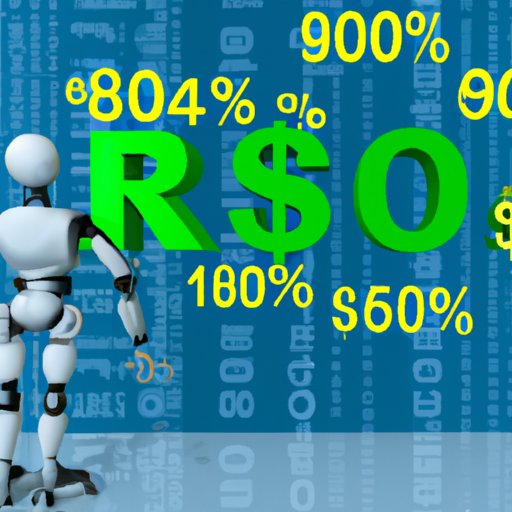Introduction
Robotics technology has been around for decades and is becoming increasingly prevalent in a wide range of industries. But what many people don’t realize is that there is a cost associated with owning a robot. From industrial robots to personal robots, understanding the cost of ownership is essential for anyone considering investing in robotics technology.

A Comprehensive Guide to the Cost of Owning a Robot
The cost of owning a robot varies depending on the type of robot and its intended use. In order to get an accurate estimate of the total cost, it’s important to understand the price tag associated with each type of robot.
Understanding the Price Tag of Different Types of Robots
Industrial robots are usually the most expensive, as they are typically used in large-scale manufacturing operations. According to a study by the International Federation of Robotics, the average cost of an industrial robot is between $50,000 and $80,000. Service robots, such as those used in healthcare, retail, and hospitality, typically cost between $15,000 and $30,000. Personal robots, which are designed for home use, range from $500 to $5,000.
Costs Associated With Building a Robot
In addition to the purchase price of the robot itself, there are other costs associated with building a robot. These include software, hardware, and labor costs.
Software is usually the most expensive part of the equation, as it requires extensive coding and programming. Depending on the complexity of the robot, software costs can range from a few thousand dollars to tens of thousands of dollars.
Hardware costs, such as motors, sensors, and controllers, can also add up quickly. The exact cost will depend on the size and complexity of the robot. Finally, labor costs can vary depending on the amount of work required to build the robot. This could include assembly, testing, and debugging.

The Pros and Cons of Investing in Robotics Technology
When deciding whether or not to invest in robotics technology, it’s important to consider both the advantages and disadvantages. On the plus side, robots can increase productivity, improve safety, and make operations more efficient. According to a study by McKinsey & Company, “robots are capable of working faster and more accurately than humans, often with fewer errors.”
On the downside, robots can be expensive to purchase and maintain. Upfront costs can range from a few hundred dollars for a simple personal robot to hundreds of thousands of dollars for an industrial robot. Additionally, there are ongoing costs associated with maintenance, software updates, parts, electricity, and insurance.
Exploring the Financial Implications of Purchasing a Robot
Before investing in a robot, it’s important to understand the financial implications. The initial investment is obviously a major factor, but it’s also important to consider the ongoing expenses associated with owning a robot.
Maintenance is essential for keeping a robot running smoothly. This could involve regular cleaning, lubrication, and checking for wear and tear. Software updates may also be necessary in order to ensure that the robot is performing optimally. Parts may need to be replaced periodically, and electricity costs should be taken into account if the robot is powered by an external source. Finally, insurance may be required in order to protect against any potential damages.
Conclusion
Robots can be incredibly beneficial for businesses, but it’s important to understand the costs associated with owning one. From industrial robots to personal robots, the price tag can range from a few hundred dollars to hundreds of thousands of dollars. Additionally, there are costs associated with building a robot, such as software, hardware, and labor. Finally, there are ongoing expenses associated with maintenance, software updates, parts, electricity, and insurance.
Investing in robotics technology can have numerous benefits, such as increased productivity, improved safety, and more efficient operations. However, it’s important to weigh these benefits against the high upfront cost and potential for job loss. Ultimately, the decision to purchase a robot is a highly personal one that should be made after careful consideration.
(Note: Is this article not meeting your expectations? Do you have knowledge or insights to share? Unlock new opportunities and expand your reach by joining our authors team. Click Registration to join us and share your expertise with our readers.)
